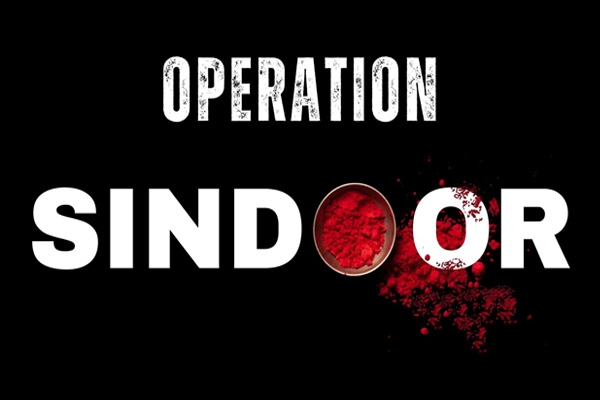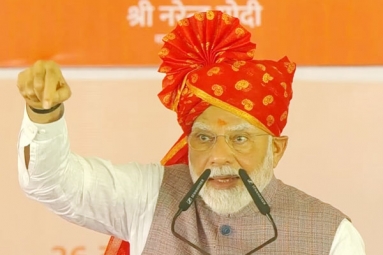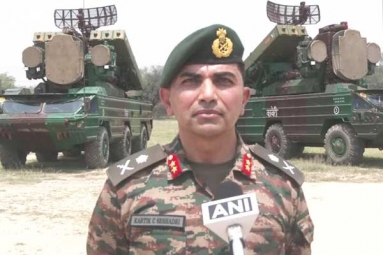
(Image source from: Twitter.com/adgpi)
In the course of Operation Sindoor, which was India's military response to the Pahalgam terror attack in Jammu and Kashmir that resulted in 26 fatalities, six fighter jets from the Pakistan Air Force (PAF), two advanced surveillance aircraft, over ten armed drones, and a C-130 Hercules transport plane were obliterated. Reports indicate that a post-conflict analysis conducted in early May highlighted significant destruction to both aerial and ground military capabilities of Pakistan. The six PAF jets were shot down during aerial confrontations, engaged and eliminated by Indian air defense units in air-to-air engagements. These confrontations took place within the boundaries of Pakistani Punjab and certain regions of Pakistan-occupied Jammu and Kashmir. Sources confirmed that the destruction of these jets was verified through radar monitoring and thermal data captured by Indian ground-based missile systems and airborne early warning assets, with the aircraft disappearing from tracking systems after confirmation of the strikes.
A notable achievement during the extensive four-day engagement was the neutralization of a critical airborne surveillance platform. Sources state that this target was either an electronic countermeasure aircraft or an Airborne Early Warning and Control system, which was targeted from an estimated distance of 300 kilometers by India's long-range strike system, the Sudarshan. Furthermore, another AEW&C aircraft of Swedish design, reportedly located at Bholari airbase in Pakistan, was destroyed in a follow-up air-to-surface missile strike. Satellite imagery confirmed the total devastation of the hangar that contained this aircraft. Additionally, a C-130 Hercules belonging to the PAF was eliminated in a precise drone strike over Pakistani Punjab. This aircraft, which was utilized for logistical purposes, was stationed at a forward operating base near Multan at the time of the strike, as indicated by sources.
Moreover, the Indian Air Force executed highly targeted strikes against unmanned aerial vehicles. In operations involving Rafale and Su-30 jets, a hangar housing numerous Chinese-built Wing Loong series medium-altitude, long-endurance drones was destroyed, resulting in the elimination of over ten UCAVs in a single operation. Indian air defense units also intercepted and brought down several Pakistani UCAVs over Indian airspace, particularly in regions of Jammu and Kashmir and Rajasthan. A newly disclosed Pakistani military report on Operation Bunyan un Marsoos, the name given to Islamabad's military operation, has emerged, revealing that India conducted airstrikes on at least seven more sites than officially admitted.
Maps and information from this report show that Indian airstrikes targeted facilities in Peshawar, Jhang, Hyderabad (Sindh), Gujrat (Punjab), Bahawalnagar, Attock, and Chor. These additional strike locations, which host strategic Pakistani military or dual-purpose infrastructure, substantiate claims that Indian air operations penetrated much deeper into Pakistani territory than previously acknowledged. The military response from India commenced on the night of May 6-7 with coordinated attacks on terrorist infrastructure in Pakistani Punjab and Pakistan-occupied Kashmir, with nine significant targets identified, including the Jaish-e-Mohammed headquarters in Bahawalpur, Lashkar-e-Taiba's camp in Muridke, as well as facilities in Muzaffarabad, Kotli, Rawalakot, Bhimber, and Chakwal.
Maxar Technologies' satellite images revealed significant destruction at various sites, notably the training camps in Pakistan-administered Jammu and Kashmir (PoJK). Indian authorities assert that the initial military actions were strictly focused on counterterrorism and did not engage Pakistani military targets until Pakistan started launching cross-border drone and missile attacks against Indian civilian and military sites on May 8. After these first strikes by India, Pakistan targeted India's western border with drones and missiles, impacting civilian areas in Rajasthan and military facilities in Jammu and Gujarat. Consequently, India expanded its military campaign to encompass 11 air bases in Pakistan: Nur Khan, Rafiqui, Murid, Sukkur, Sialkot, Pasrur, Chunian, Sargodha, Skardu, Bholari, and Jacobabad.
On the afternoon of May 10, amid increasing diplomatic pressure and challenges on the battlefield, Major General Kashif Abdullah, the Director General of Military Operations for Pakistan, reached out to his Indian counterpart, Lieutenant General Rajiv Ghai, to propose an immediate ceasefire. Following this communication, India consented to pause its military activities but made it clear that it would retaliate if further provoked.





















